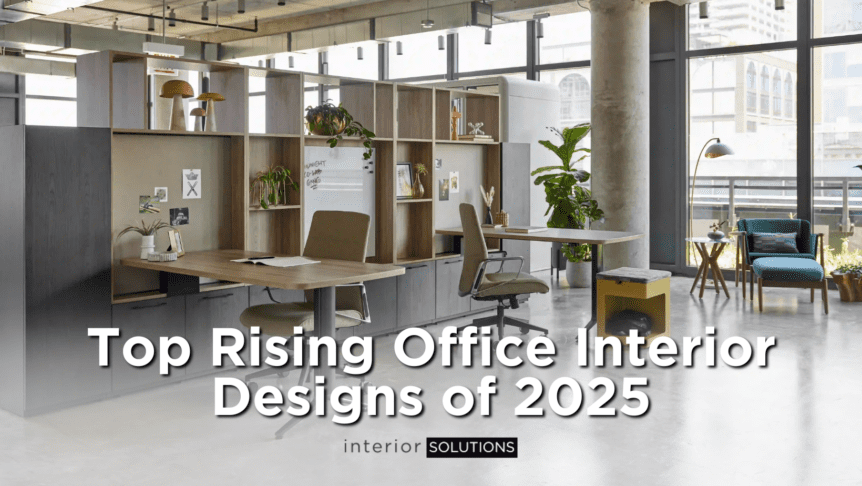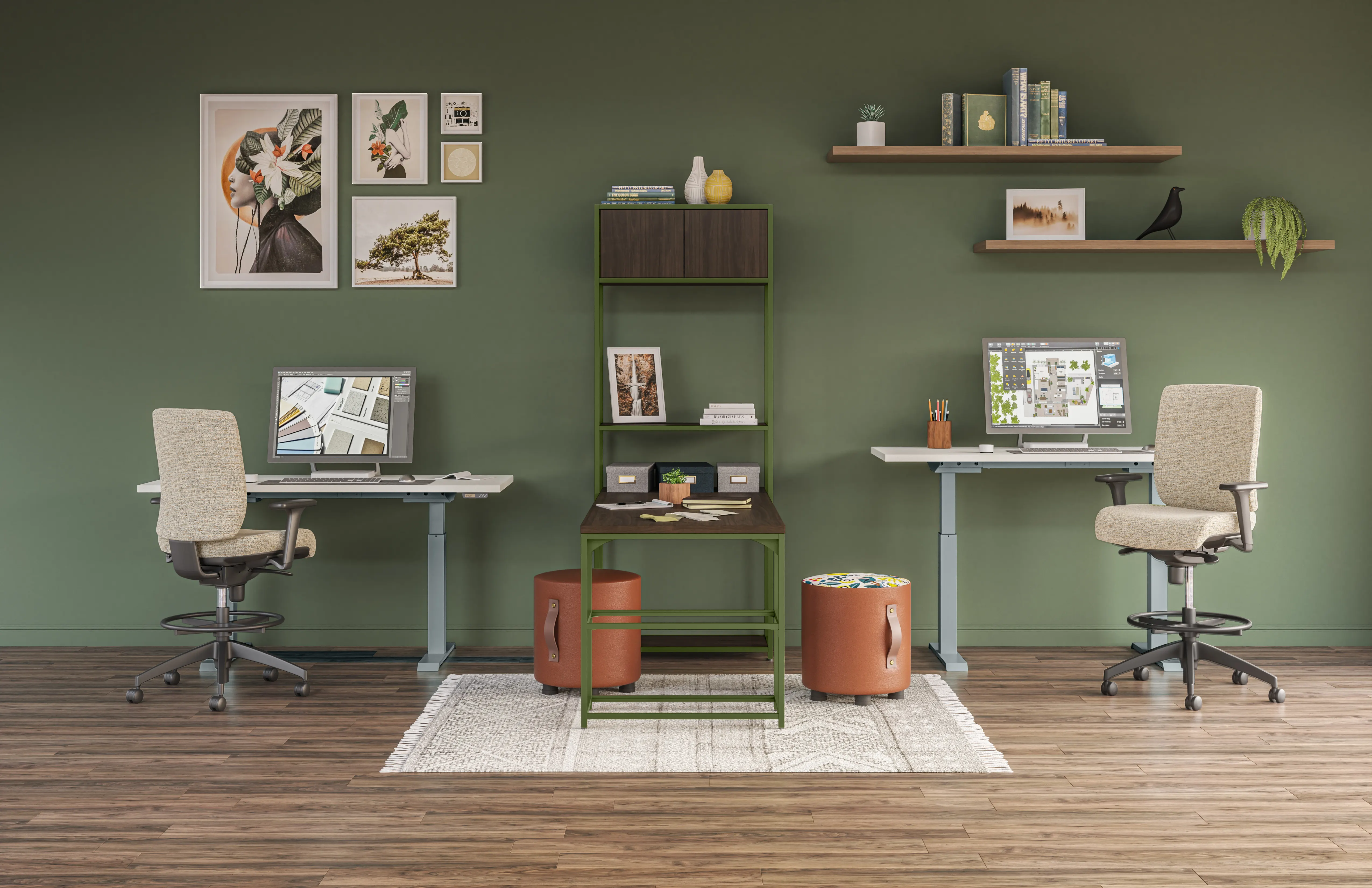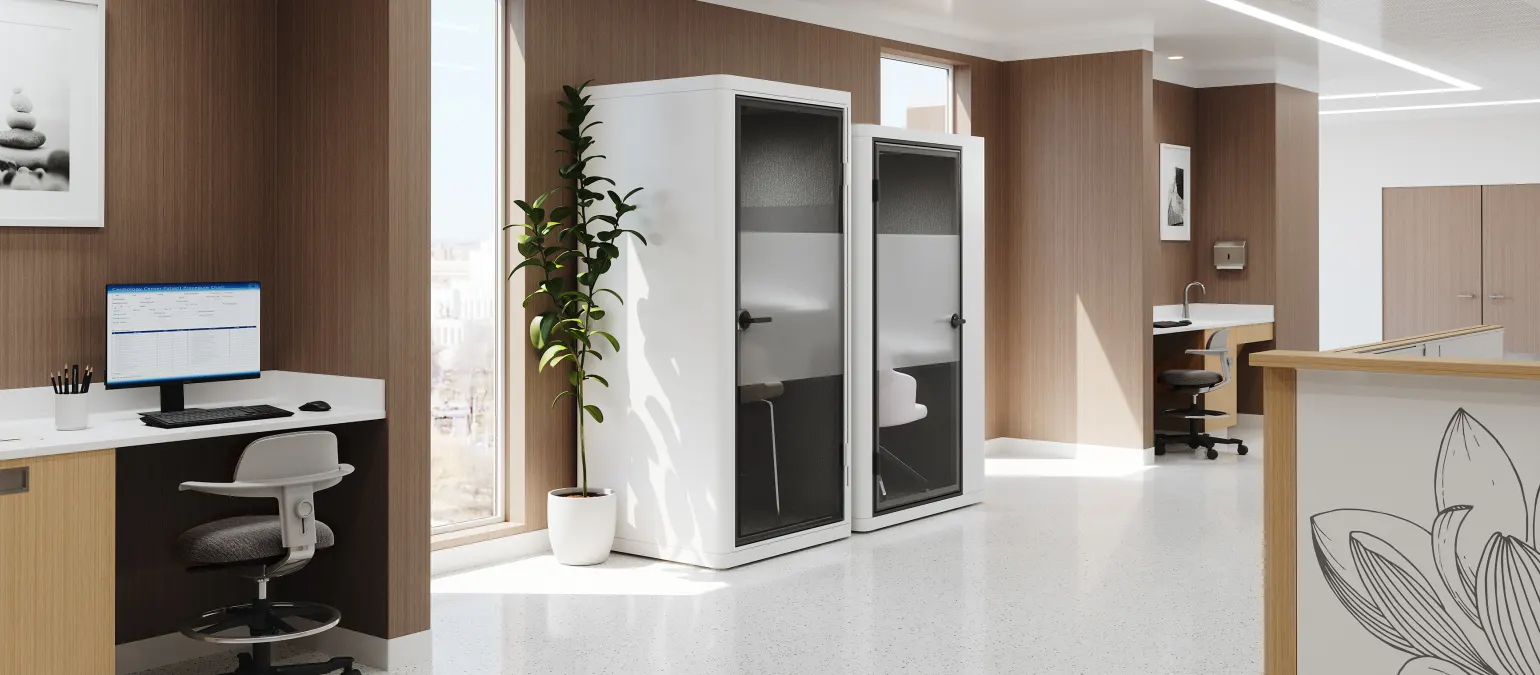As businesses evolve, so do their office spaces. The modern workplace is no longer just a physical location; it is a dynamic environment that supports productivity, collaboration, and employee well-being. In 2025, office interior design trends are all about blending functionality, sustainability, and aesthetics to create spaces that inspire innovation and efficiency.
Companies are moving away from traditional, rigid office setups and embracing more flexible, adaptive environments that cater to diverse working styles. These evolving designs prioritize not only visual appeal but also the comfort and health of employees, reinforcing the importance of holistic workplace experiences. From integrating smart technologies to embracing nature-inspired elements, businesses are reimagining their workspaces to foster creativity, collaboration, and comfort.
Biophilic design continues to dominate office interiors in 2025, as businesses increasingly recognize the benefits of bringing nature into the workplace. This trend focuses on incorporating natural elements such as green walls, indoor gardens, and ample natural light to enhance employee well-being. Research shows that exposure to nature-inspired environments can significantly boost productivity, creativity, and overall job satisfaction while reducing stress and mental fatigue.
To further embrace biophilic design, more offices are integrating organic materials like wood, stone, and bamboo into their interiors. These materials not only add aesthetic appeal but also contribute to a healthier and more sustainable work environment by improving air quality and reducing reliance on synthetic finishes. Additionally, the use of indoor water features, plant partitions, and living ceilings is becoming more common, reinforcing a connection to the natural world.
Employers are also prioritizing access to outdoor spaces, such as rooftop gardens, terraces, and open-air meeting areas, to encourage breaks in nature and foster collaboration. Smart office designs now incorporate biophilic elements alongside technology, using automated lighting systems that mimic natural circadian rhythms and air-purifying plants that enhance indoor air quality.
As companies continue to refine their approach to workplace wellness, biophilic design is evolving from a luxury feature to a standard practice, shaping the future of office interiors in a way that benefits both employees and the environment.
The hybrid work model has inspired offices to design flexible workspaces that can easily adapt to a variety of employee needs and work styles. With the increasing demand for both remote and in-office work, companies are reimagining traditional office layouts to create dynamic, versatile environments that support productivity, collaboration, and well-being.
One of the key elements driving this shift is modular furniture, which allows for quick reconfiguration of workspaces based on different tasks. Height-adjustable desks, mobile workstations, and flexible seating arrangements give employees the freedom to choose where and how they work, whether they need a quiet space for deep focus or an open setting for brainstorming sessions.
Movable partitions and acoustic panels further enhance adaptability by enabling teams to transform open areas into private work zones as needed. These features help balance the need for both collaboration and concentration, ensuring that employees can work efficiently without distractions. Additionally, multi-functional rooms serve as a vital component of flexible office design. These spaces can seamlessly transition from meeting rooms to breakout areas, relaxation zones, or even event spaces, maximizing the utility of office real estate.
Technology also plays a crucial role in supporting flexible workspaces. Wireless charging stations, cloud-based collaboration tools, and smart office systems that adjust lighting, temperature, and acoustics based on occupancy contribute to a seamless hybrid work experience.
By prioritizing flexibility, companies are creating office environments that cater to the evolving needs of their workforce, fostering a sense of autonomy and comfort while ensuring that in-person collaboration remains meaningful and productive.
With advancements in artificial intelligence (AI) and the Internet of Things (IoT), offices are becoming smarter and more intuitive than ever before. These cutting-edge technologies are transforming traditional workspaces into highly efficient, data-driven environments that enhance productivity, convenience, and employee well-being.
Another breakthrough is the rise of smart desks, which enhance ergonomics and adaptability. Height-adjustable desks with built-in sensors can remind employees to change positions, promoting better posture and reducing sedentary behavior. Some smart desks are even equipped with wireless charging pads, embedded screens for video conferencing, and AI-driven personalization that adjusts desk settings based on user preferences.
Beyond individual workstations, AI-driven workplace analytics help businesses optimize space utilization by tracking occupancy patterns and employee movement. These insights allow companies to design more efficient layouts, allocate resources effectively, and improve overall workplace experience.
As AI and IoT continue to evolve, offices will become even more responsive, seamlessly adapting to employees' needs while fostering a smarter, healthier, and more connected work environment.
Sustainability remains a top priority in office design as companies seek to reduce their environmental impact while creating healthier workspaces. Businesses are investing in energy-efficient LED lighting, smart HVAC systems, and motion-sensor technology to cut energy consumption.
A standout initiative in sustainable office furniture is the Seaqual Initiative by Kimball, which repurposes ocean-bound plastic waste into high-quality textiles. By integrating these materials into office furnishings, companies can reduce plastic pollution while promoting responsible sourcing.
Beyond design, waste reduction programs, paperless initiatives, and incentives for eco-friendly commuting further support sustainability efforts. These initiatives not only benefit the environment but also enhance employee well-being and reinforce corporate social responsibility. The future of office spaces is greener, smarter, and more sustainable.
With the rise of open-plan offices, effective sound management is essential for maintaining productivity and comfort. Excessive noise can lead to distractions and stress, prompting companies to invest in solutions that balance collaboration and concentration.
Acoustic panels help absorb sound and reduce echoes, coming in wall-mounted, ceiling-hung, and freestanding designs. Noise-canceling pods provide quiet spaces for focused work and virtual meetings, while soundproof meeting rooms ensure privacy and minimize disruptions.
Many offices also implement sound zoning, designating quiet areas for deep work and collaborative spaces for discussions. White noise machines and sound-masking systems further enhance auditory comfort.
By prioritizing noise control, companies create more efficient, comfortable work environments that support both teamwork and individual focus.
As remote work remains popular, companies are integrating compact, high-functionality micro-offices within larger workspaces. These private areas provide employees with quiet, distraction-free zones for focused work while maintaining easy access to collaborative spaces.
Designed for efficiency, micro-offices feature modular furniture, ergonomic seating, soundproofing, and built-in technology like height-adjustable desks and charging stations. Many offices use reservation systems to optimize space and ensure availability.
Strategically placed near communal areas, micro-offices allow seamless transitions between solo work and teamwork. By incorporating these spaces, companies create a balanced environment that supports both productivity and collaboration.







